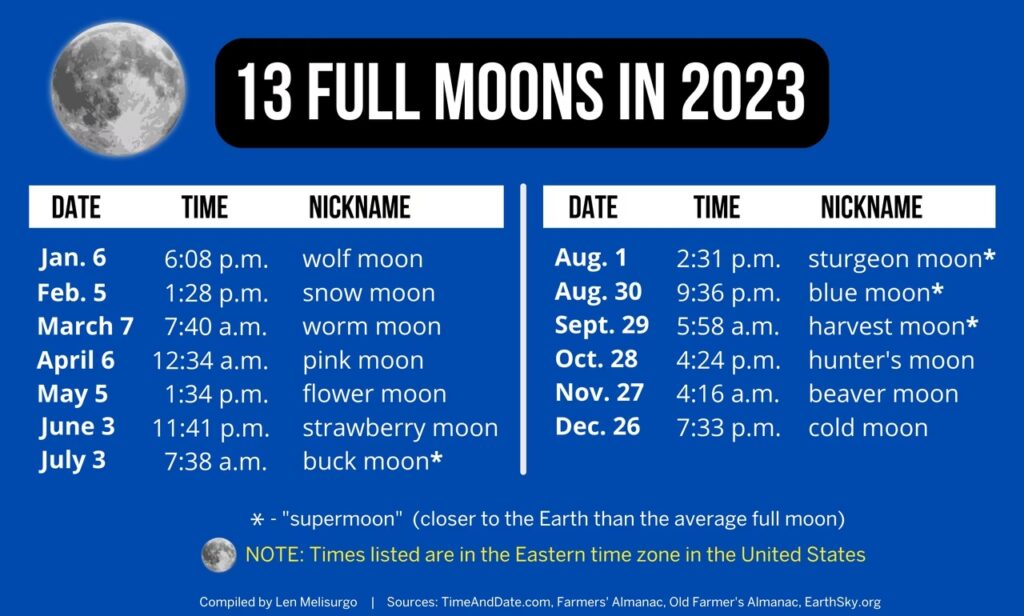
During a supermoon, the Moon’s apparent size in the sky can be up to 14% larger and 30% brighter than a regular full moon.
- The Moon’s orbit is not a perfect circle around Earth.
- Because of its modest ellipticism, the distance between it and our planet changes.
- The Moon might appear up to 14% bigger in the sky than it actually is.
Two supermoons will occur in August for the exceptional occasion. Astronomers will be able to more clearly study the Moon’s topography, geological features, and impact craters thanks to the event’s higher brightness and improved surface visibility.
What is a supermoon?
A stunning celestial phenomenon known as a supermoon occurs when the Moon looks larger and brighter in the sky than usual. This fascinating phenomena happens when a full or new moon occurs at the same time as the Moon’s perigee, or closest point to Earth in its elliptical orbit.
The Moon’s orbit around Earth is not a perfect circle; rather, it is slightly elliptical, which causes variations in the Moon’s distance from Earth throughout the course of its orbit. The distance between the Moon and Earth is 4,05,000 kilometers at its furthest point (apogee) and 3,63,104 kilometers at its closest point (perigee). The visual spectacle of a supermoon is greatly influenced by this distance difference of around 27,000 miles (42,000 kilometers).
When will there be a supermoon?
With just 3,57,530 kilometers separating it from Earth, the first of these supermoons will rise on Tuesday evening. It will be larger and brighter than usual because to its close closeness.
On the evening of August 30, there will be a second supermoon, also referred to as a blue moon. This moon will only be 3,57,344 kilometers away from Earth, which is even closer than usual. The occurrence of two full moons in the same month is referred to as a “blue moon,” and it is a somewhat uncommon event.

How do you view a supermoon?
Clear skies are necessary for anyone interested in viewing these cosmic spectacles. The experience can be improved by using binoculars or a backyard telescope to highlight details like lunar maria, which are black plains created by past volcanic lava flows, and rays coming from lunar craters.
Because there were so many sturgeon fish in the Great Lakes in August hundreds of years ago, the full moon in August is referred to as the “sturgeon moon.” The sturgeon moon, which qualifies as a supermoon this year, promises to provide an outstanding spectacle.

